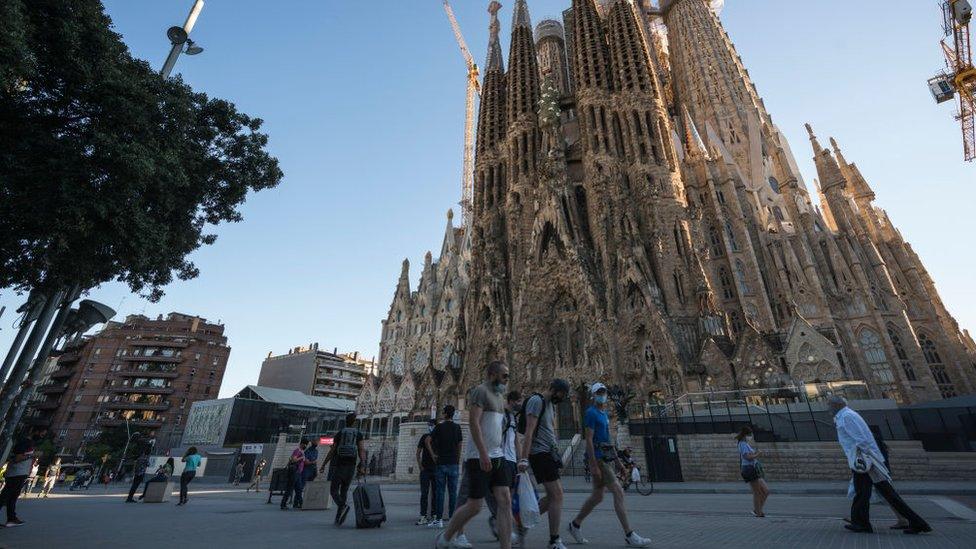Barcelona plans major increase in 'green' zones
- Published

Barcelona is planning a major expansion of low-traffic zones, giving priority to pedestrians and cyclists to reduce pollution and provide green spaces.
The work is part of a 10-year plan focusing on the central Eixample district of the Catalan capital, Mayor Ada Colau has announced.
New squares will be created linked by "green axes" providing more than 33 hectares for pedestrian use.
The plans build on the city's creation of environmental "superblocks".
Starting with two districts in 2016, "superblocks" cut through-traffic, restricting car use to residents, emergency services and deliveries. They now number seven.
is expected to cost 38m euros (拢34m, $44m). The idea is that no resident in the district will be more than 200 metres (650ft) from a green space.
Tree planting and construction of cycle lanes is being accelerated.
The city authorities are asking the public for ideas on how the 21 new squares and a similar number of tree-lined "green axes" should look. Work is expected to begin in 2022.
More than 300,000 vehicles pass through Eixample a day, a figure that is expected to fall sharply under the proposals. When "superblocks" were first introduced, they sparked protests from car users.
The city authorities' plan for the Eixample district
Priority is given to those on foot, and those vehicles which are permitted must travel at no more than 10km/h (6 mph).
Announcing the plans, Mayor Colau praised the existing schemes and said the proposals would build on a model of urban development "with more safe space, a greener environment, more street life and strengthened local businesses".
The scheme would herald "less pollution, more mobility and a new public space".
Barcelona is one of several European cities which are expanding low- or zero-traffic zones, a move partly brought about by the need for social distancing and more pedestrian space during the coronavirus pandemic.
However, the schemes have proved highly controversial, particularly in some areas of London.
- Published17 September 2020